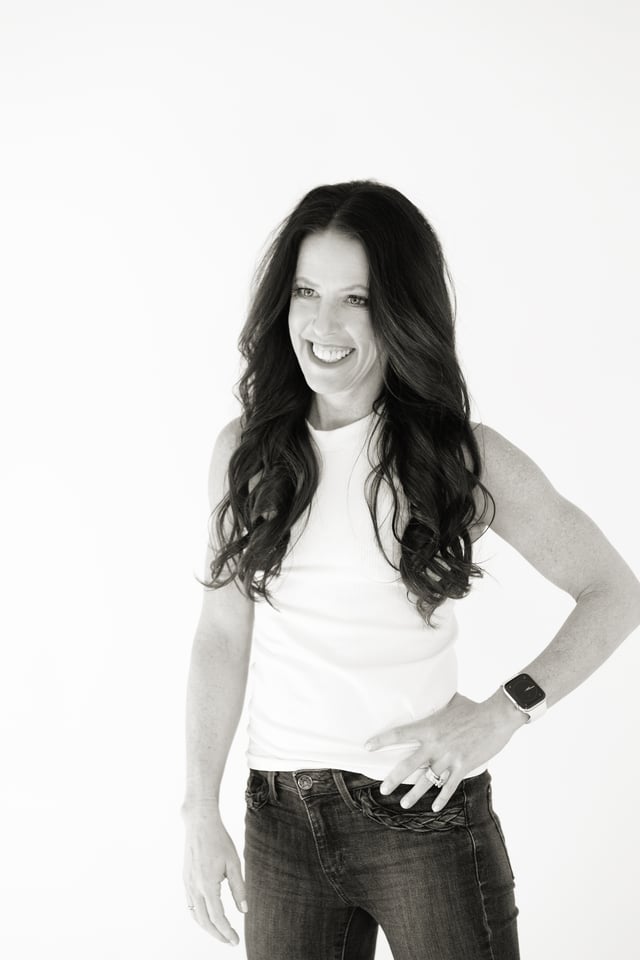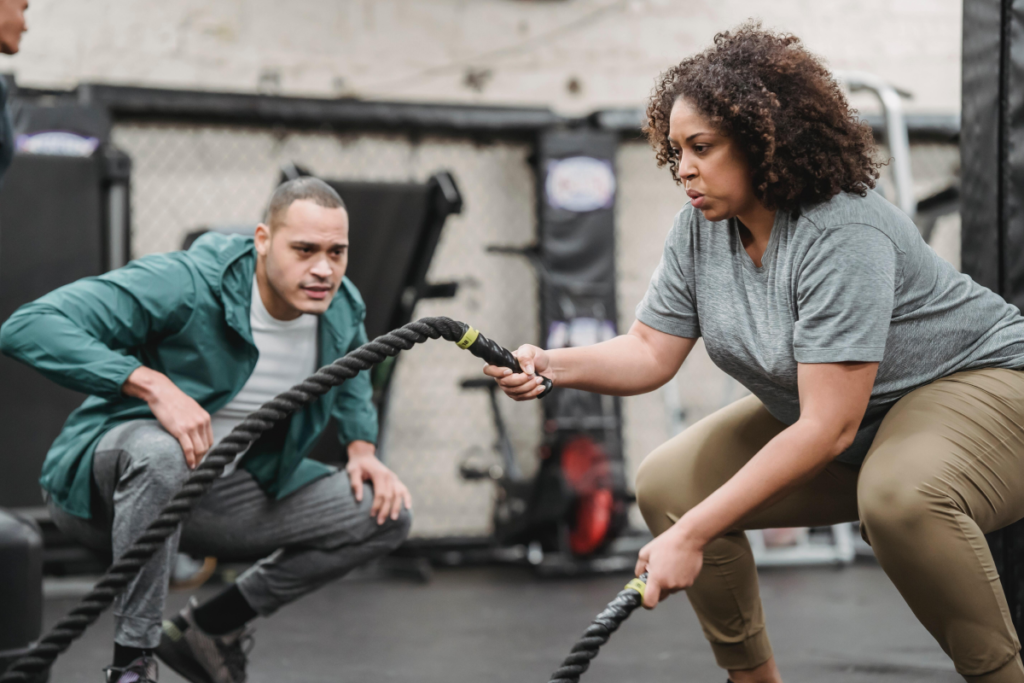How to Rebuild Your Fitness Business, Part Two
Learn how to develop a diversified sales cycle.

You may be navigating a comeback after a tumultuous year, and it may feel daunting. However, if you invested the lessons you learned into building a sustainable fitness business, that was time well-spent. In the first part of this series, we introduced four distinct steps needed to build a long-lasting fitness business or career:
- developing your foundation
- creating a robust sales cycle process
- understanding pricing and selling in a service field
- consistently applying core self-promotion strategies
We also stressed the importance of forming a solid foundation to direct your fitness business decisions and actions. After completing the suggested exercises, you should now have a clear idea of the demographic you serve, the benefit(s) you provide and why you made these choices. Congratulations! You are now ready to move on to step two: developing a diversified sales cycle that appeals to the “ideal client” in your fitness business. This is an essential ingredient for success and is built on one fundamental truth: People purchase in proportion to the trust they have in you or your offerings (i.e., products or services).
Being Your Brand
Before you dive in and create the products and services that will make up your sales cycle, you must first build trust and credibility in your brand. As a service professional, you are your brand, and it is based in part on your foundation (step one). After choosing a target market (versus choosing based on market opportunity) and identifying the number-one result you wish to provide, you can establish yourself as a category authority. This is critical for developing trust and credibility.
Becoming a category authority requires that you dive deep into learning about your ideal clients, their urgent needs and compelling desires, and the best resources, tools and methods you’ll need to deliver results. Ideally, you’ll blend formal and informal continuing education with hands-on experience. You should also become infinitely curious about your target market. If you connect with your ideal clients, those who may become your clients and even some who will never be your clients, with the intention of learning more about who they are and what they need, you will gain valuable insights. Then, you can share your knowledge, interest and compassion for the people you serve and the work you do—and you’ll be well on your way to being viewed as a trusted professional.
As you continue on your journey, you’ll also develop your niche, or specialty; demonstrate your credibility; and enhance trust by delivering results in a unique way—and people will talk about their results and how you made them happen. Your niche will become how you are known in the world, and if this message is consistent over time, building trust with potential clients will become quicker and easier.
See also: Three Steps to Building a “Hybrid” Fitness Business
The Sales Cycle in Your Fitness Business
Now we can dive into designing a robust sales cycle that provides various options for clients. Once people become aware of you, you want them to find an offer that matches their level of trust. Think of your sales cycle as a customer journey that begins long before the purchase. Once a potential client finds you, she checks out your available options, places value on what she sees and then chooses in proportion to the trust she has in you, based on prior experience and your marketing, word of mouth, research, social currency and so on.
When your sales cycle offers several waypoints between free and paid, the possibility of someone finding something that looks appealing increases right away. You should have a minimum of three stages in your sales cycle, beginning with a no-barrier-to-entry offer and progressing from there. After the first stage, each stage will increase in “risk” and reward. Let’s take a look:
Stage 1: No Barrier to Entry
A no-barrier-to-entry offer requires minimal trust. One barrier is price; therefore, the offer will most likely be free. However, you should consider other barriers beyond price tag, such as time, commitment level and face-to-face interaction. In addition, the product or service should speak specifically to your target market and solve problems, provide high value, and be available without it being necessary to interact with you on command.
If corporate warriors are your target market, an example might be a free, energizing midday mini-workout that they can complete anytime, anywhere. In exchange for an email address, they will easily be able to download and view the workout.
You might consider providing additional, free options that progress in perceived risk before stage 2. Some target markets may require additional trust-building opportunities before being willing to invest money. Protect your time by showing your expertise in a way that doesn’t require trading time for money. A logical next offer might be a free group training session, which could feel riskier to some because it requires showing up at a specific time and calls for more trust than a virtual offering. Also consider offering a free one-on-one session or consultation; these options take more time on your end, but they help cement trust.
See also: Three-Step Sales Success
Stage 2: Low Barrier to Entry
Next, extend a low(er)-cost, moderate-risk offer as the first investible option. Many fitness professionals assume that offering one paid-for service at different price points will be enough of a fit. However, as we’ve discussed, price isn’t the only factor the client is considering; he’s also weighing the perceived risk, which includes how the product or service is delivered.
In-person (face-to-face), livestream (online but both visible) and on-demand (your expertise, but conveniently consumed) all carry different levels of risk, based on the user’s past experience and comfort level with you. You can say the same for private, small-group and large-group services. Therefore, in stage 2 offer more than just a-la-carte, a 10-pack and monthly unlimited with different prices.
For example, let’s say you offer a self-guided, on-demand 4-week program in stage 2. Someone who needs a little more time to trust you before buying one-on-one, in-person sessions may see this as a perfect fit. By providing value in this way at a lower price point, you can continue to build trust and credibility over time.
Stage 3: Ultimate Offer
In stage 3 of your sales cycle, present an ultimate offer—your highest-priced, highest-risk offer. Remember, this is not about how you perceive your offers; it’s about how a potential client might perceive them. Compared with your other offers, this one requires the most work and significant commitment from your lead. While you’ll provide considerable value at every stage of the customer journey, this should be where you have the most control over the results. It doesn’t require you to provide one-on-one or in-person service, but it should be the most personal and customized.
For example, this may be where your customized personal training program—based on assessments, along with periodic check-ins between sessions—fits into your sales cycle. In addition, you may want to offer different packages and pricing structures to further customize the product.
A sales cycle built in this way offers several entry points and acknowledges the varying levels of trust in potential clients. Compare this approach to endlessly searching for leads, dumping them into the top of your funnel, offering a free trial and working to convert a certain percentage of those leads to paying clients. Instead, once clients are in your sales cycle, you’ll be able to build trust and credibility with them over time and help them move up and down your stages with ease. Not to mention, the more stages you offer, the more value you can place on your most time-consuming and challenging services (such as one-on-one), which can significantly increase your earning potential.
In our next installment, we’ll discuss strategies for pricing offers in your sales cycle, as well as the secret to simple selling as a service professional. This third step to increasing your longevity in the fitness industry requires that you shift your mindset on these two vital pieces of the puzzle.
See also: Optimizing Your Fitness Site for Sales
Shannon Fable
Shannon Fable is a sought-after speaker, author and thought leader in the area of fitness business development and strategic innovation. She has spent more than two decades helping impressive brands such as Anytime Fitness, ACE, FIT4MOM® and BOSU® with business and program development. Fable served as chair of the ACE Board of Directors and is the co-founder of GroupEx PRO®, a cloud-based group fitness management tool that she successfully sold to Daxko in 2019. As a certified Book Yourself Solid® business coach, she helps fitness professionals navigate the industry to build scalable and sustainable careers.





